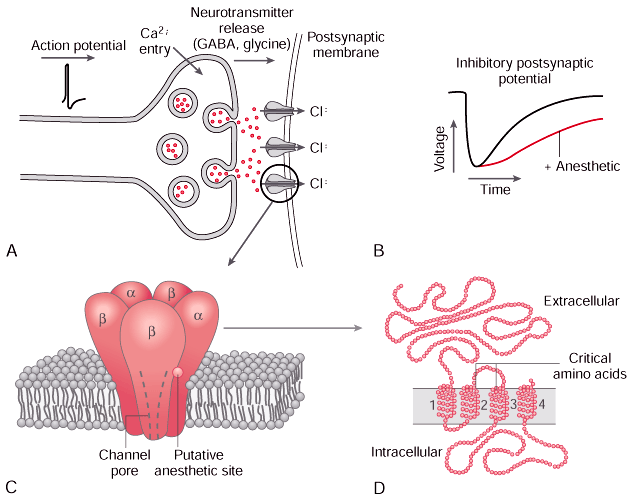Figure 4-14
A, The neurotransmitters
γ-aminobutyric acid (GABA) and glycine are released at inhibitory synapses,
bind to their respective receptors, and result in a flow of chloride ions across
the postsynaptic membrane. B, Inhaled anesthetics
potentiate the postsynaptic inhibition produced by GABA or glycine. C,
Inhibitory receptor-channel complexes, as well as many other ligand-gated channels,
typically consist of five subunits embedded in a membrane lipid bilayer. Many subunit
combinations may exist for a given receptor-channel complex. D,
Each of the subunits contains four transmembrane segments, and the second transmembrane
segment of each subunit is thought to line a pore (i.e., channel) that extends across
the membrane. Anesthetic sensitivity can be altered by mutation of critical amino
acids in these transmembrane regions. (Adapted from Franks NP, Lieb WR:
Anaesthetics set their sites on ion channels. Nature 389:334, 1997.)

